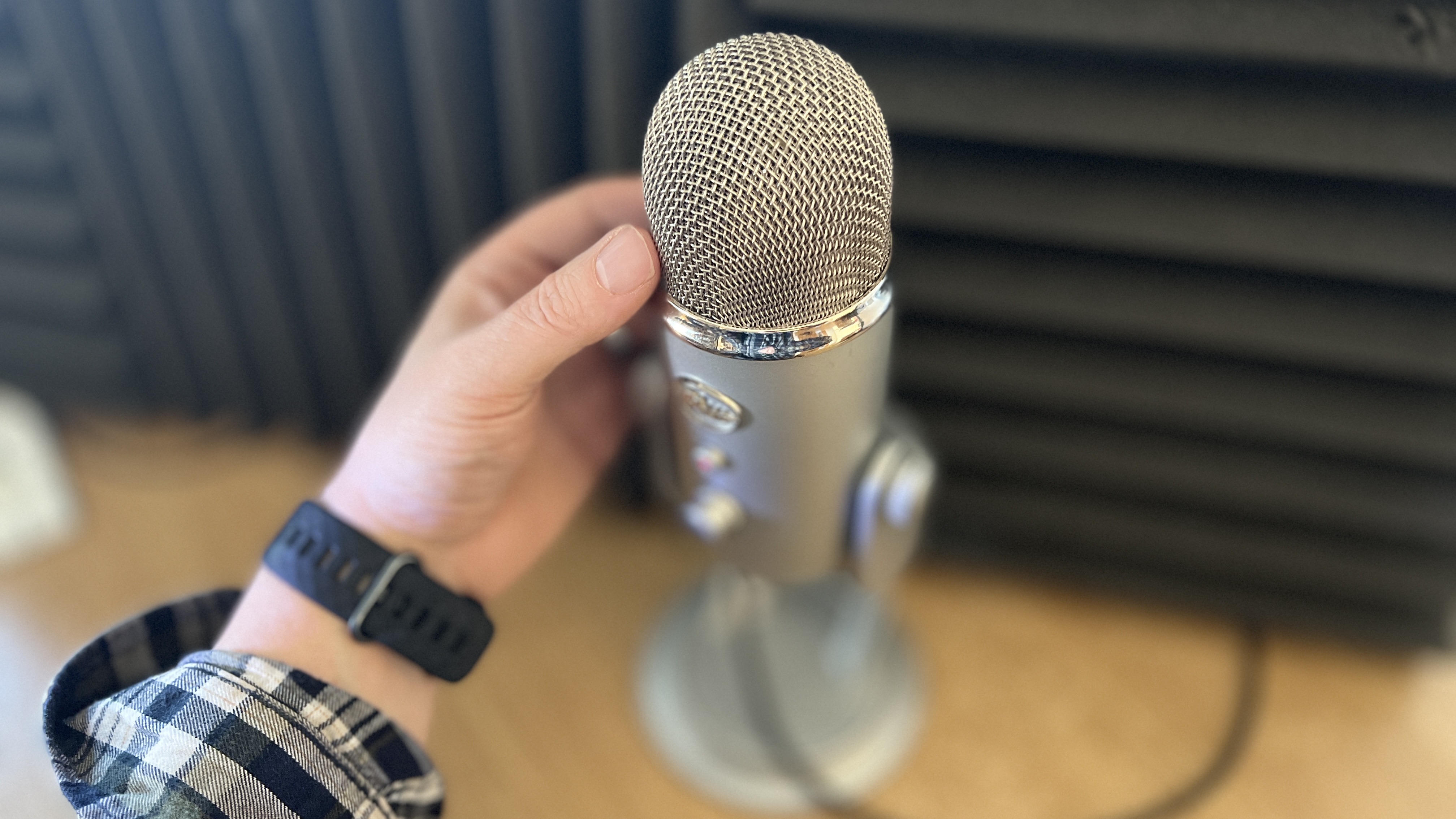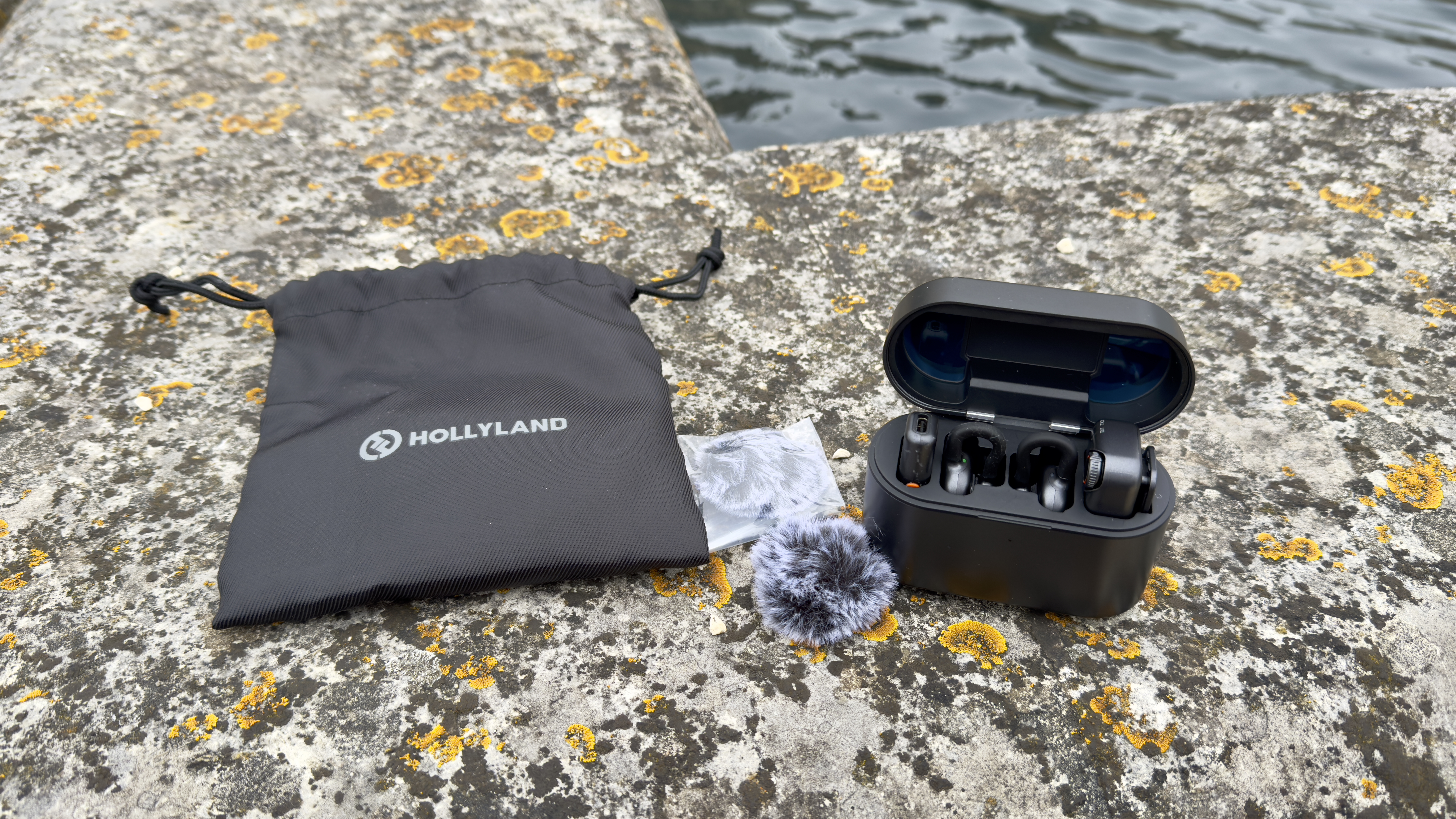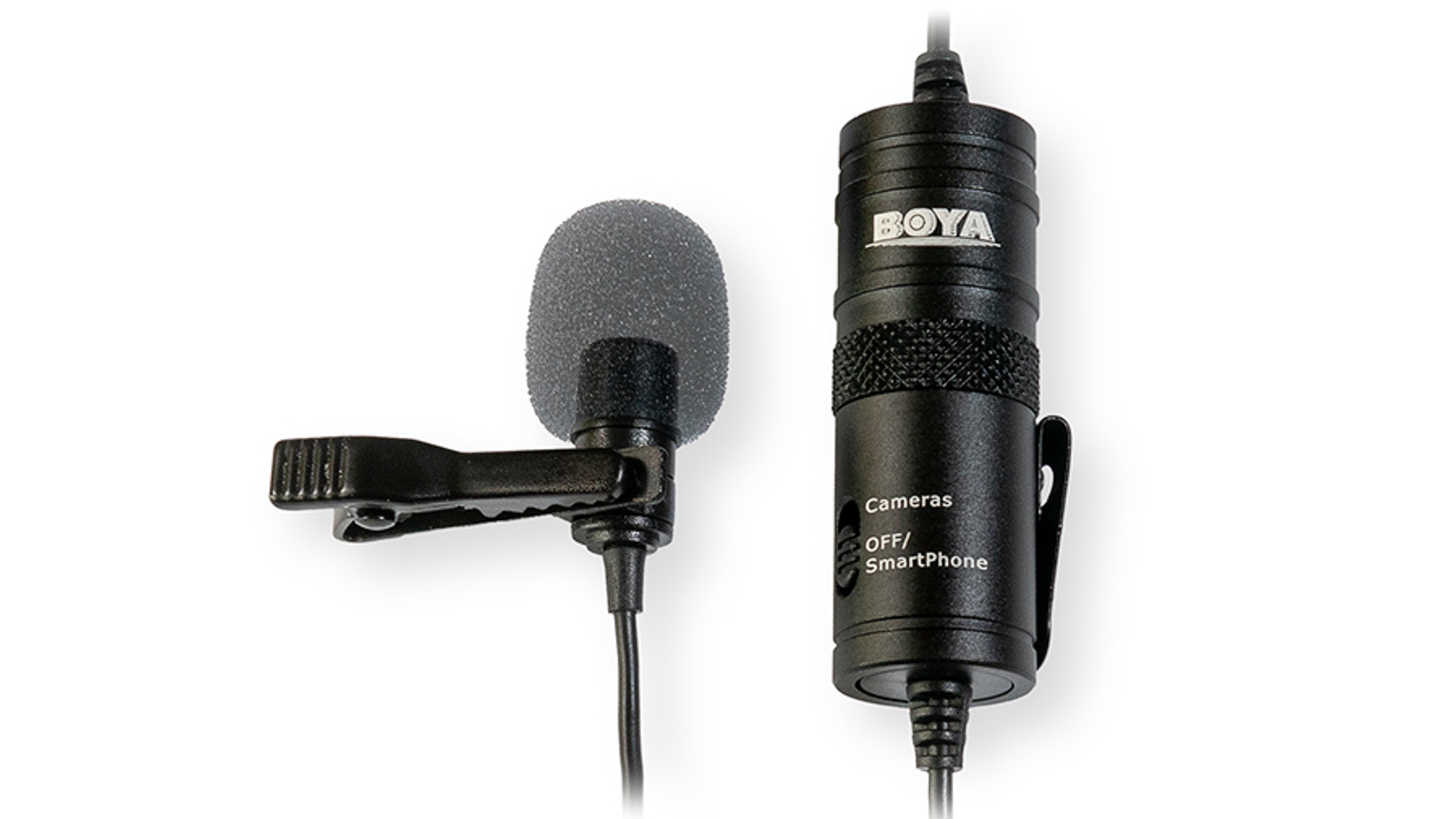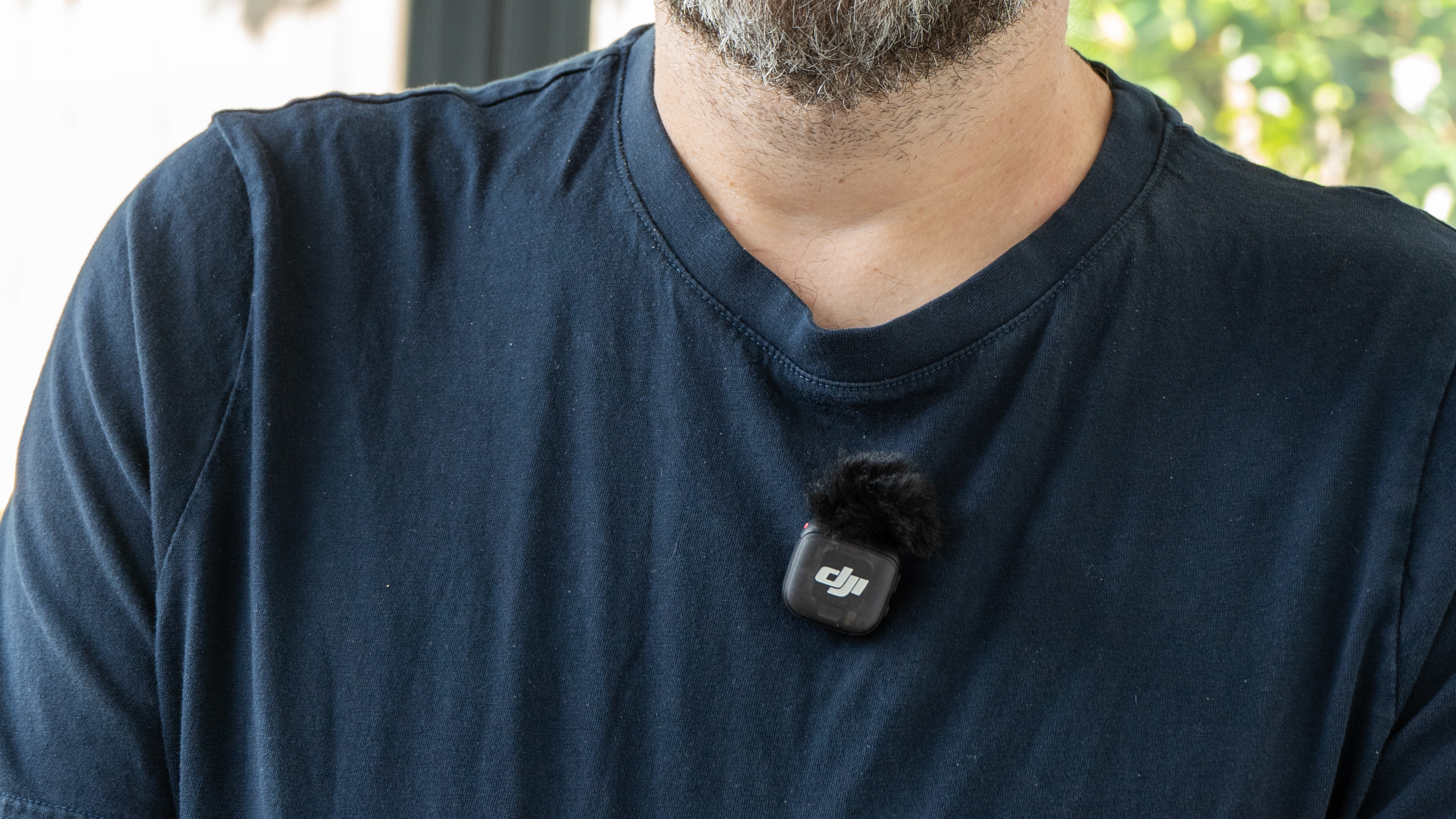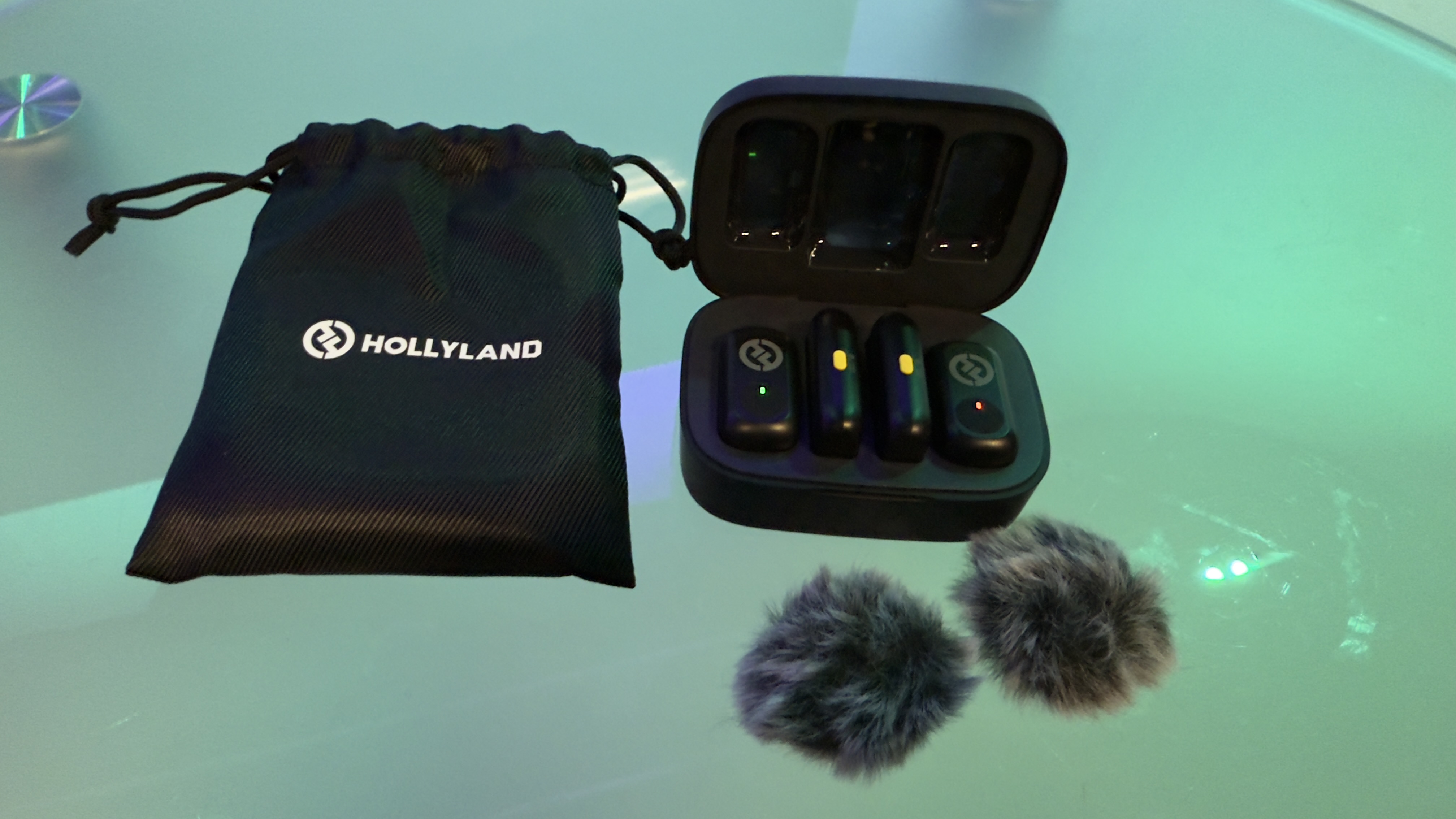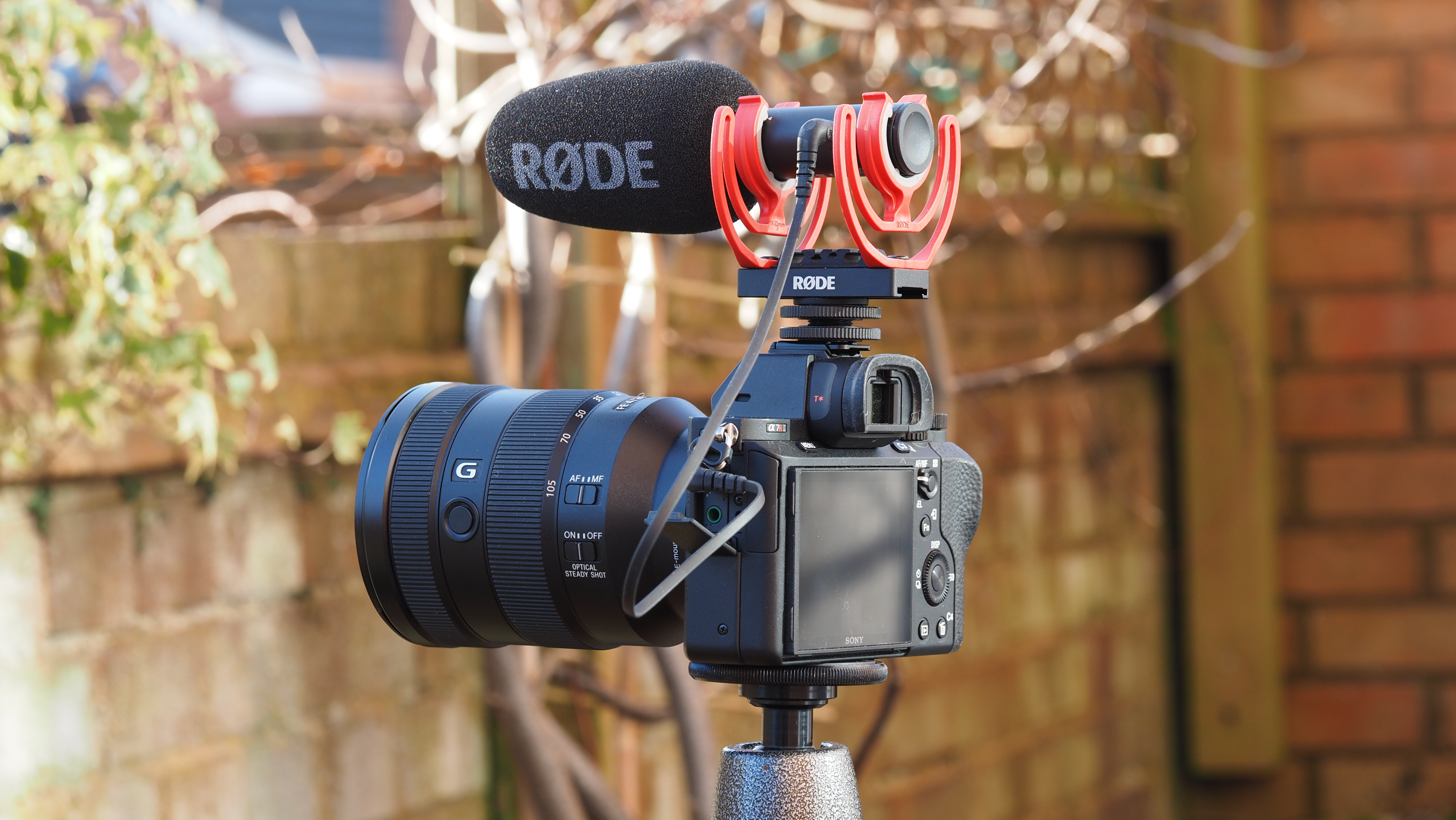The best microphone for vlogging and filmmaking
Ranging from lavalier to shotgun styles, you'll find the best microphone for vlogging and filmmaking right here
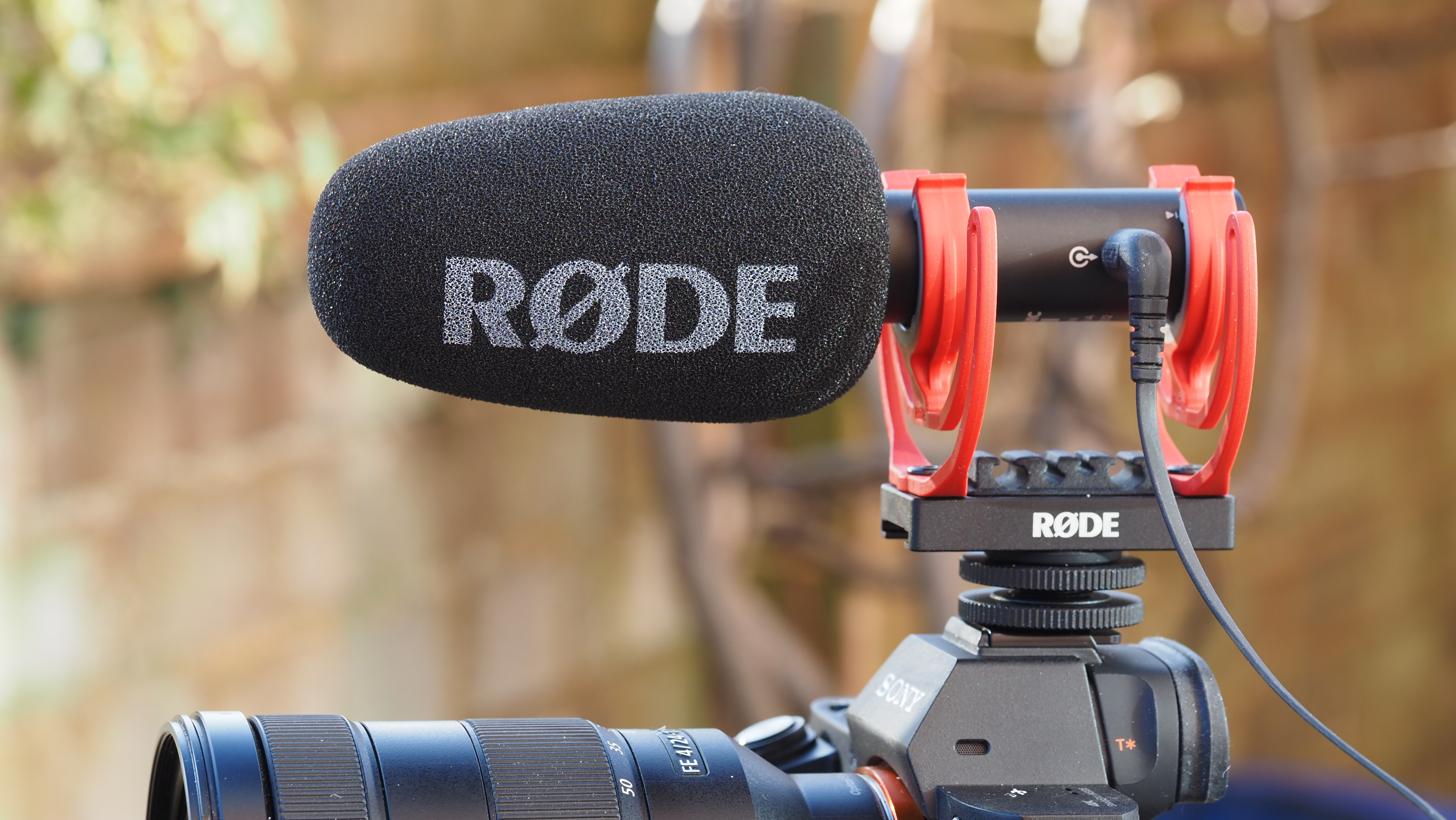
If you want to improve your vlogging, the best microphone for vlogging and filmmaking is one of the best investments you can make. The majority of modern smartphones and cameras shoot good-looking video nowadays, but many of them lag behind in terms of their built-in audio quality – and poor audio is one thing an audience will not tolerate. So, get a mic!
In this article, I've gathered together the top buys, covering studio mics, lavalier mics and shotgun mics. If you're not sure of the difference, don't worry, I've included a section at the bottom where I explain the key points you need to know. I've also made sure to include plenty of budget options, and you may be surprised by just how cheaply you can get hold of a great mic.
My picks based on the findings of our review team, who test a great number of major mic releases before they hit the market (I think our resident audio expert George Cairns has hit thirty reviews for us?). Read on to see which mics made the cut, and don't forget to check out our guide to the best iPhone microphones for more great choices.

Jon is one of our go-to specialists when it comes to all aspects of photography, from cameras and action cameras to lenses and memory cards, flash diffusers and triggers, batteries and memory cards, selfie sticks and gimbals, and much more besides.
The Quick List

The best compliment we can pay this excellent studio mic is the fact that it's the one the DCW team uses in our studio! Perfect for straightforward desktop recording, it'll last for years.
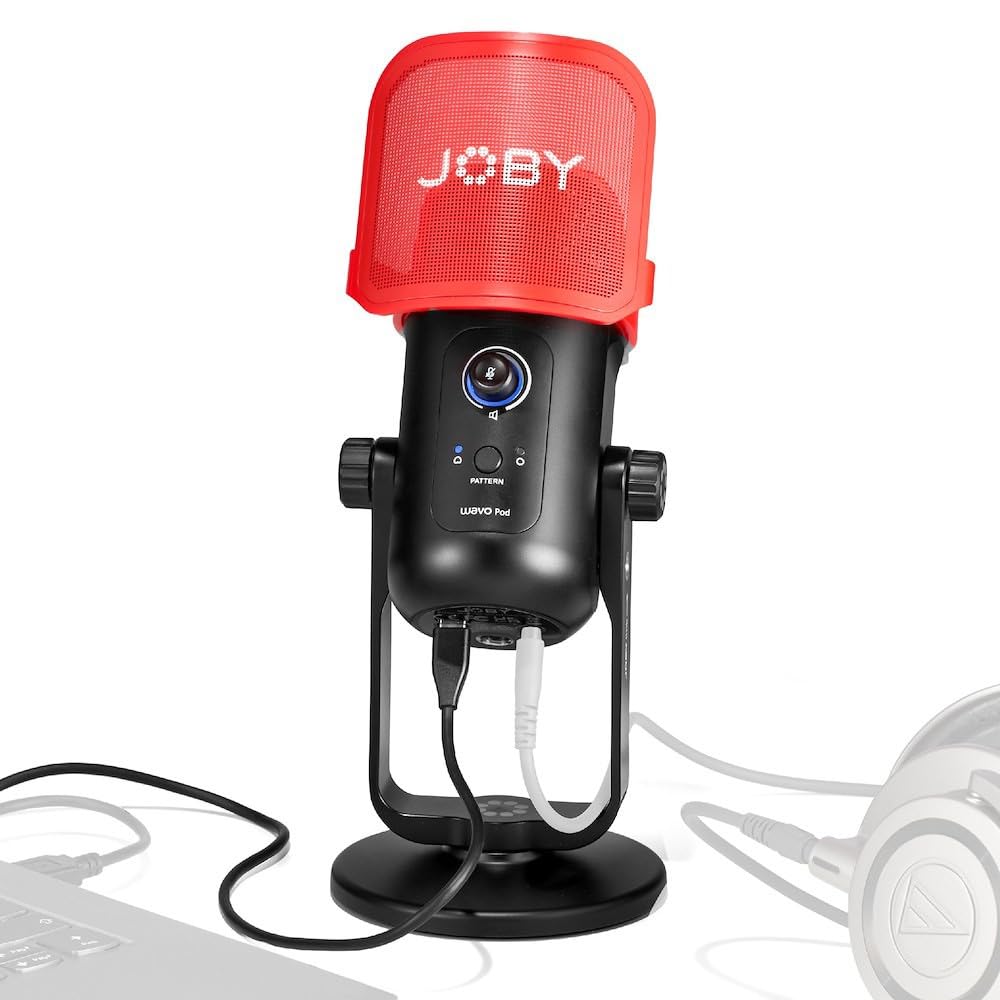
Offering professional podcast-level quality at a reasonable price, the Joby Wavo POD doesn't have as many polar patterns as the Yeti, but can still do an excellent job.
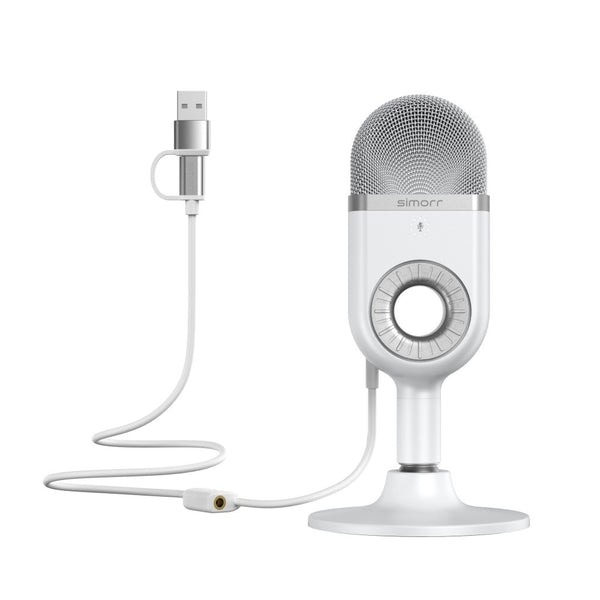
While it's tricky to get outside of the US, the simorr Wave U1 Condenser Microphone is a brilliant budget option for podcasters and studio vloggers, especially beginners.
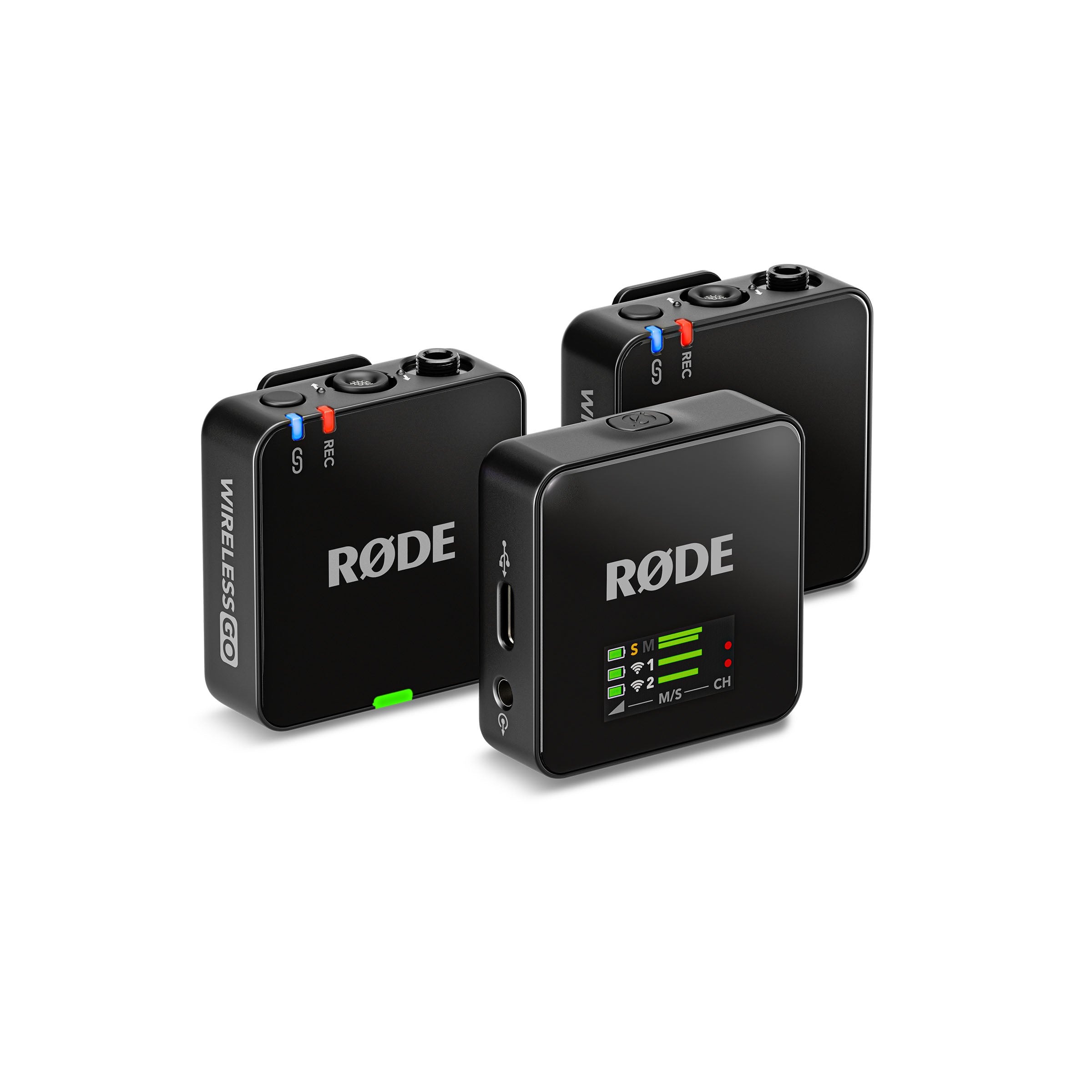
A two-mic wireless lav system that's easy to set up and use, the RØDE Wireless GO Gen 3 offers excellent transmission range, high-quality audio and Intelligent Gain Assist.
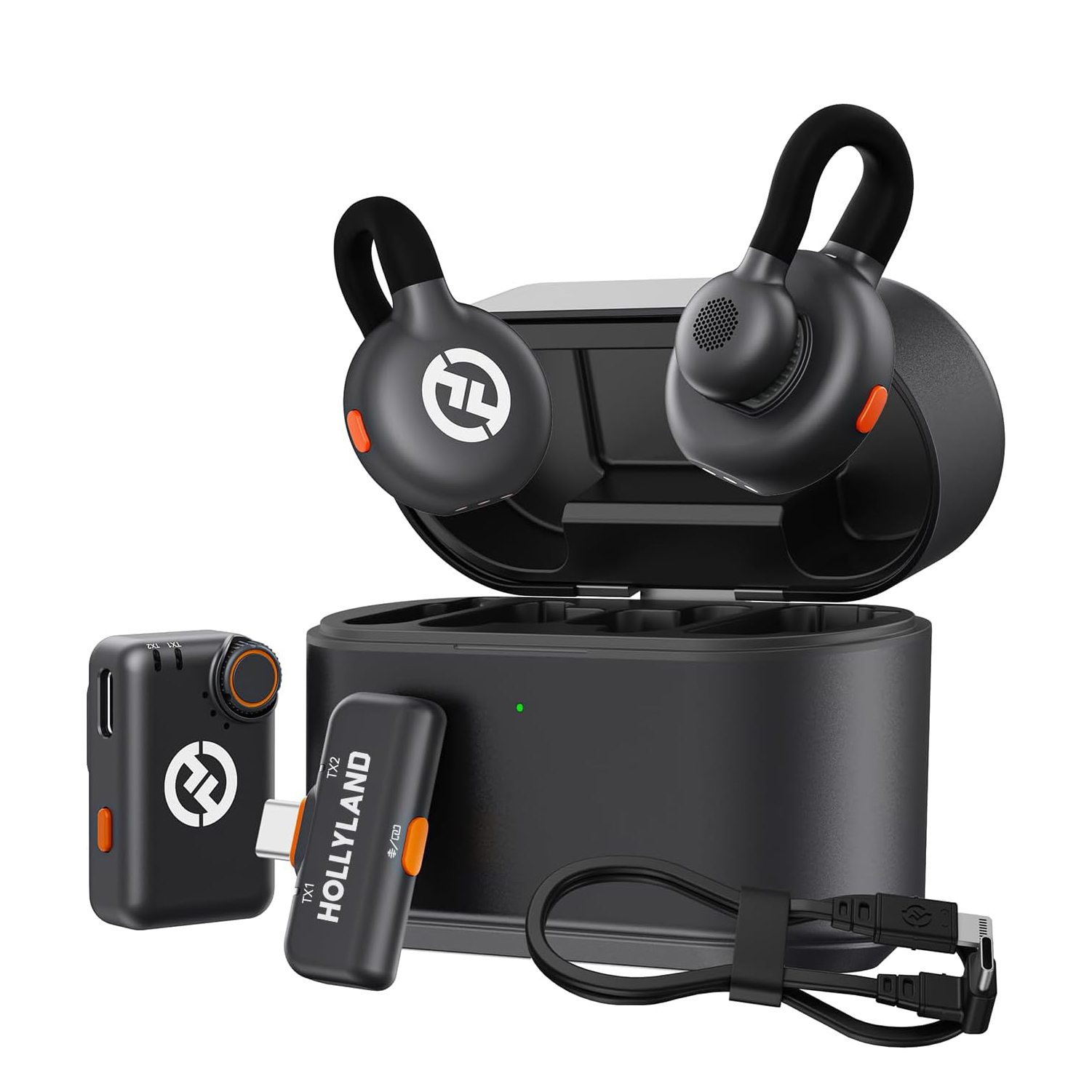
If you want to keep your lav mic unobtrusive and out of sight, the Hollyland Lark M2S is a perfect choice. It impressed in our testing with excellent sound quality.
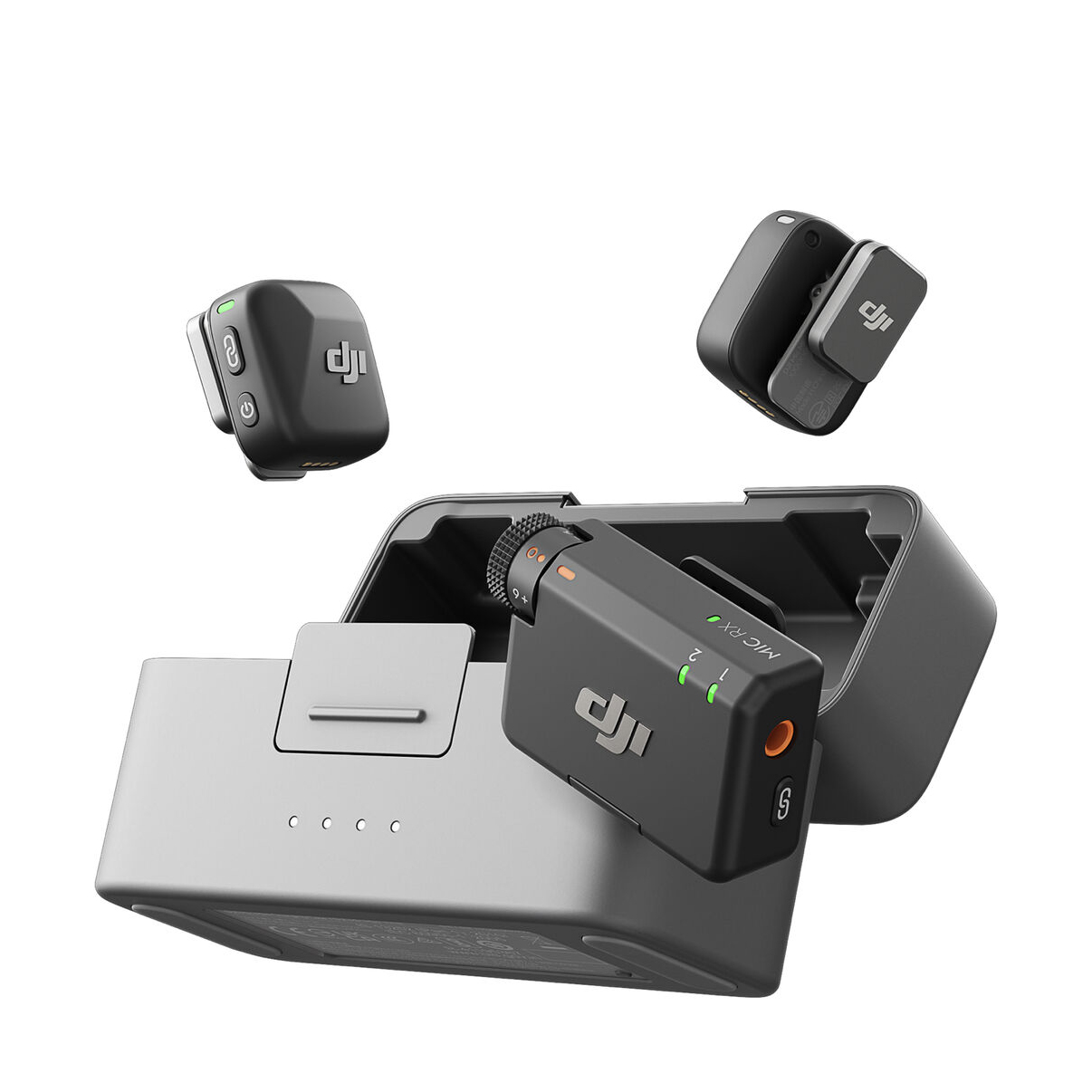
Arguably a better choice for many users than the flagship Mic 3, the DJI Mic Mini records its audio directly to your phone for easy, convenient editing on-device.
See more products
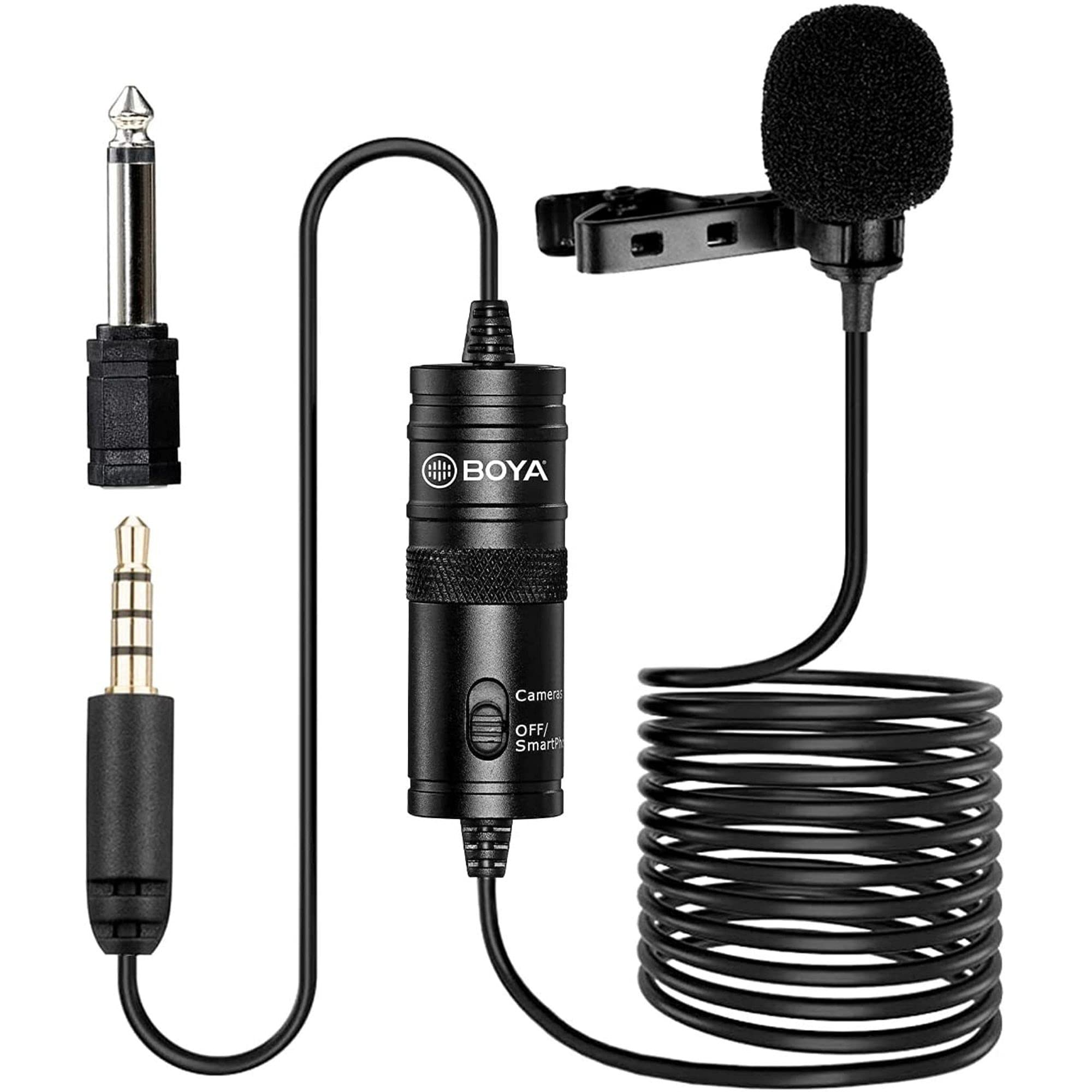
If you prefer the reliability of a wired connection, the Boya BY-M1 offers very impressive sound quality with a low noise floor, all for an eminently reasonable asking price.

DJI's most fully featured mic yet, the DJI Mic 3 is an outstanding achievement, delivering high-fidelity audio and offering a slew of useful features.
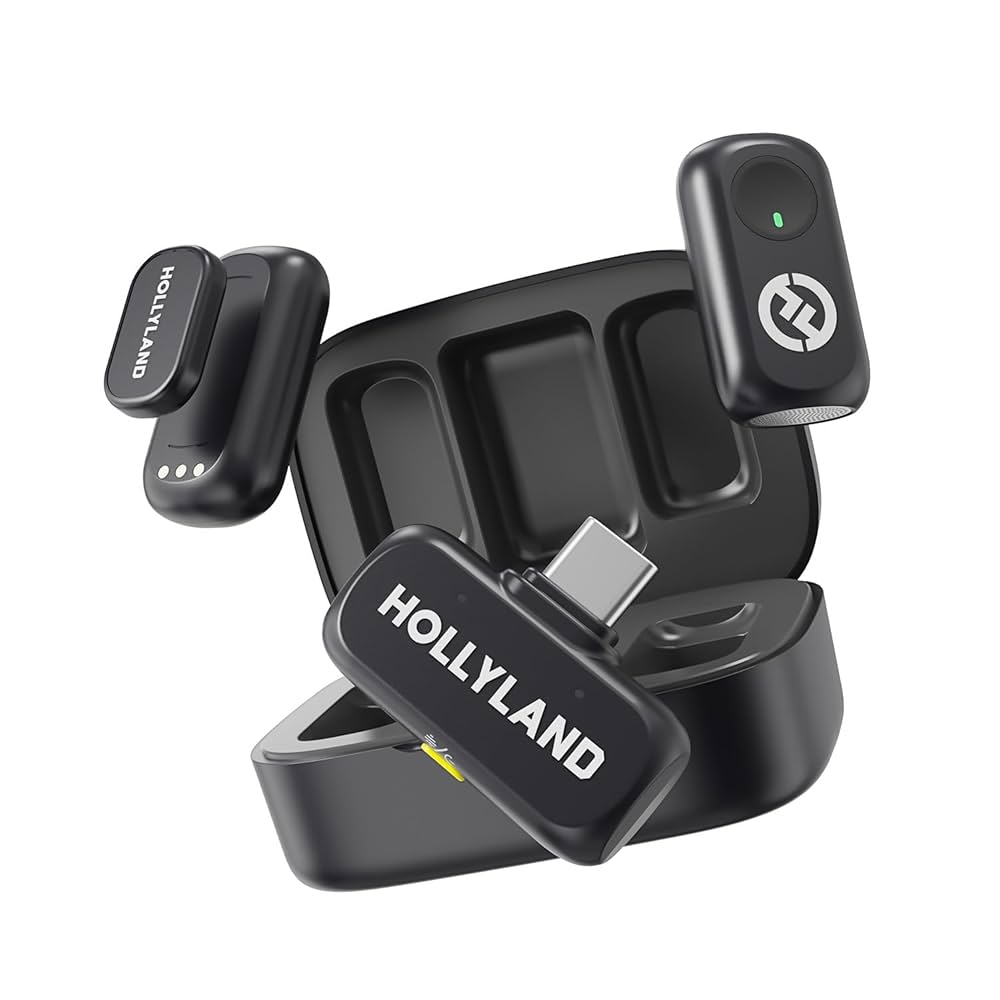
Tiny and affordable, with impressive features for the price, the Hollyland Lark A1 gives you everything you need to improve the audio of your vlogs.
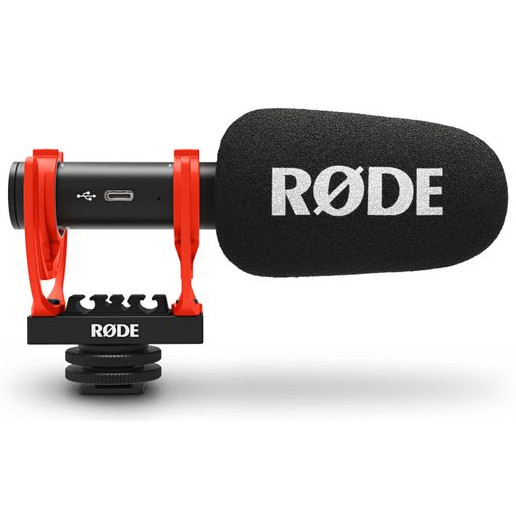
The best on-camera shotgun mic for uncomplicated point-and-shoot recording, the Rode VideoMic Go II is a stalwart institution in the world of vlogging and video.
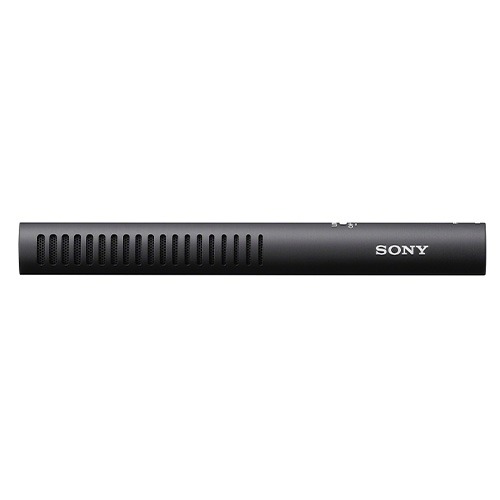
If you're willing to invest a little more in high-quality audio, the Sony ECM-778 is a superb shotgun mic, with amazing directional control from such a small body.
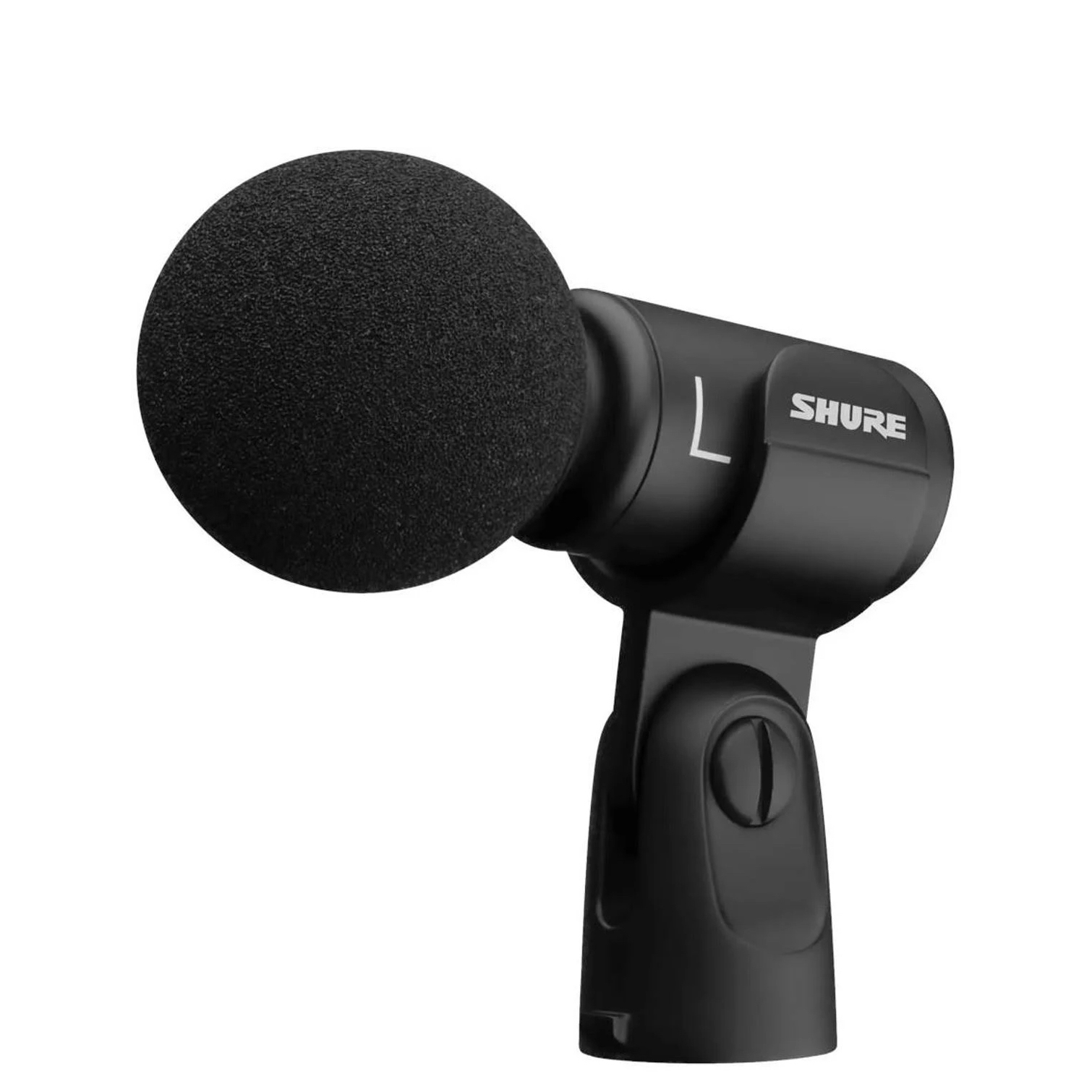
A shotgun mic designed for those setups where portability is key, the Shure MoveMIc 88+ can also double up as several other types of mic, thanks to its adjustable pattern.
The best microphone for vlogging & filmmaking
Why you can trust Digital Camera World
Best studio mic
Specifications
Reasons to buy
Reasons to avoid
The Blue Yeti microphone has become a near-ubiquitous sight in podcast studios and on streaming desks. It’s a plug-and-play microphone that anyone can figure out how to use, and its sound quality is excellent too. So whether you just need to record yourself or are aiming to capture an entire group conversation, it's a great choice.
This mic uses a three-capsule system to power four recording patterns, allowing you to contour the audio capture around the specifics of your studio or setup. Its controls are well laid out and easily accessible, making it straightforward to adjust volume or quickly toggle the cough/mute button. Plus, the design is chic as hell.
The biggest compliment we can pay the Blue Yeti Studio microphone is this – it’s the mic the Digital Camera World team uses. For more details, see our Blue Yeti review.
Best value studio mic
Specifications
Reasons to buy
Reasons to avoid
This is a budget alternative to the similar but well-established Blue Yeti USB mic that’s already popular with podcasters and voice-over artists. It has fewer polar patterns than the Yeti but it will capture great sound if you’re podcasting via the front of the mic on the cardioid setting.
A detachable orange pop shield adds a splash of color (if you need to show off the mic via YouTube) and it helps soften audio bangs caused by plosive consonants. A handy multi-function knob adjusts headphone volume or the strength of your input sound levels.
Great value for money - see our full Joby Wavo POD review.
Best budget studio mic

Specifications
Reasons to buy
Reasons to avoid
The simorr Wave U1 stands out in a crowded market due to the combination of its low price, small size and large sound. As such, it's a great budget choice. At around half the height of a Blue Yeti, it won't take up much space. And there's a touch sensitive Mute button, physical input dial for sound levels, and a headphone jack for monitoring sound quality.
Overall, that quality isn't the highest, but it's certainly better than your PC's built-in mic would be, and at this price, it's a good options for beginners who are just getting started in vlogging or film-making. For more details, see our simorr Wave U1 review.
Best wireless lav mic

Specifications
Reasons to buy
Reasons to avoid
The latest generation of RØDE's popular line of wireless lav mics, the Wireless Go Gen 3 delivers a real 'grab-and-go' quality, being simple enough to set up and operate that even inexperienced users can record great-quality audio. Like the previous Wireless Go II, this incarnation boasts the Intelligent Gain Assist feature, which automatically adjusts levels the way a sound recordist would to ensure that audio quality is clear and consistent.
The transmission range is excellent – in our testing, it held up even as our reviewer descended a staircase to a distance 50m away from the receiver, in a building containing lots of concrete and metal (which can interfere with wireless transmission). RØDE claims a range of up to 260m, though you're unlikely to realistically be recording from such a distance. There's also a near-zero latency codec, meaning you likely won't have to shift the audio track in post to sync up with your subject's lip movements.
For more details, see our RØDE Wireless Go Gen 3 review.
Best discreet lav mic
Specifications
Reasons to buy
Reasons to avoid
This is one of the most discreet and subtle lav mics you can buy – a stark contrast to the previous Hollyland Mark M1, which had a blocky transmitter that stuck out like a Lego brick on the subject's lapel. The newer Mark M2S version features a tiny omnidirectional microphone that also acts as a hook for a lapel or shirt, meaning the transmitter can be hidden.
In our testing, it also delivered excellent audio quality thanks to its high 24-bit depth and 48 kHz sample rate. Transmission range is very impressive, with a maximum of 300m being much more than anyone is realistically going to need. You may get some signal drop-out if you turn your back to the camera, but otherwise performance is very solid. We found the built-in noise reduction worked very well – much better than most wireless mics, where it tends to produce an unpleasantly warbly track.
Read our full Hollyland Mark M2S Combo Kit review for more.
Best mini lav mic
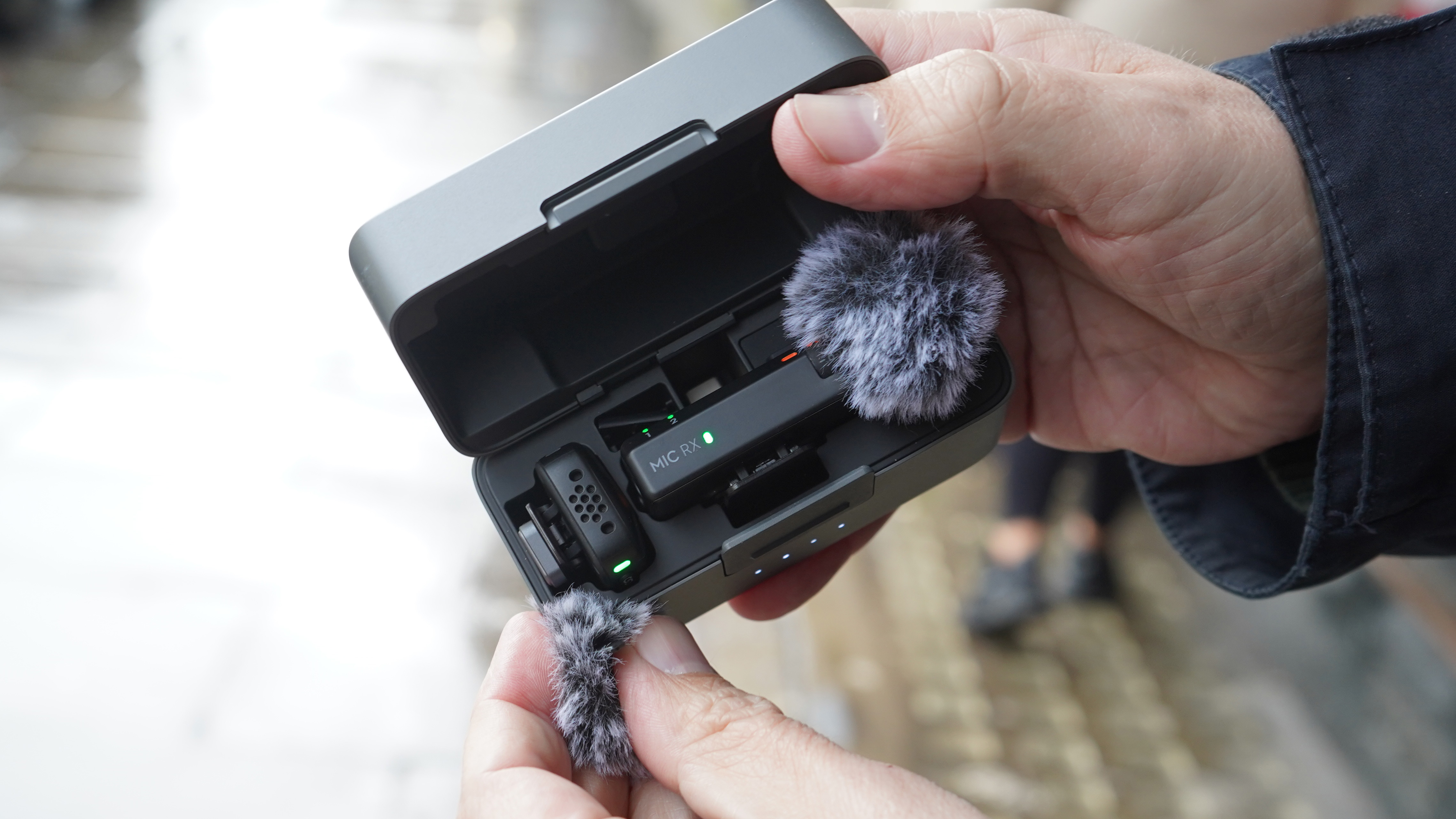
Specifications
Reasons to buy
Reasons to avoid
While the DJI Mic and its successors have become near ubiquitous on YouTube and other vlogging platforms, the DJI Mic Mini is likely going to be the best option for most people, especially new users. While you don't get the internal safety track of the bigger DJI Mics (which ensures a clean copy of your audio in case of drop-out), the Mic Mini instead records straight to your phone – which realistically for many social media users is the device you're going to be editing on.
Impressively well-priced and built to an incredibly lightweight standard, the DJI Mic Mini will significantly up the quality of your audio recording without adding too much cost or bulk. It's very simple to operate, and in our testing proved itself to be reliable recorder even when we put obstacles between ourselves and the mic in an attempt to fox it. There is no 32-bit float audio, but the 24-bit or 16-bit audio via Bluetooth is realistically going to be fine for most purposes.
For more details, see our DJI Mic Mini review.
Best wired lav mic
Specifications
Reasons to buy
Reasons to avoid
The Boya BY-M1 is a wired lavalier mic with a switchable power source. It runs on an LR44 button cell, and needs to be switched on if using a 'passive' source, or off if recording via a device with plug-in power.
It comes with a lapel clip, and includes a foam windscreen to help dampen wind noise and plosives. It offers an omnidirectional polar pattern, and the frequency response stretches from 65Hz to 18KHz.
While not as wide-ranging as some tie-clip mics here, this is still great for voice recording. The plastic construction of the capsule is a little bulkier than professional lavs, but the 6m lead is long enough to mic up your presenter and keep things tidy in the frame.
Considering the low price, the BY-M1 delivers audio quality way beyond expectations. It does have a hotter output than others here, and there's no attenuator to dip the volume, so it's possible it the signal could distort on some equipment.
But when we tested it on our Canon EOS 5D Mk III, the result was an extremely low noise floor, giving excellent, hiss-free recordings. Although the build quality means it needs to be treated with care, this is an outstanding little mic for the money.
Best pro lav mic
Specifications
Reasons to buy
Reasons to avoid
DJI has been steadily improving its wireless mic design since the first introduction of the DJI Mic, and this latest incarnation is not just the bet yet, but is arguably one of the most fully featured and impressive wireless mic kits you can buy right now. It earned the full five stars in our review, blending superb sound quality with a fully rounded and well thought-out feature set.
One of the big upgrades to this third iteration of the DJI Mic is the significant increase of its internal storage. It features a generous 32GB of on-board storage, which gives you extra peace of mind that your recordings aren't going to get lost in the event of a wireless failure, while also providing some extra legroom to make use of its 32-bit float for top-notch pristine quality. Other major additions include two adaptive gain controls, to prevent clipping and maintain consistent performance, and tone presets that are designed to provide rich and bright-sounding voices.
Otherwise, this is the same DJI Mic that many content creators have come to love, with that useful charging case, easy clip-on design and handy furry shields. If you're just using your phone for no-frills vlogging, it's probably overkill, and the DJI Mic Mini featured above is probably the better and more cost-effective choice. However, for high-end performance, the Mic 3 delivers like nothing else.
Read our full DJI Mic 3 review for more
Best beginner lav mic
Specifications
Reasons to buy
Reasons to avoid
If you're a vlogger looking for your first lavalier mic set, I'd definitely recommend the Hollyland Lark A1. It gives a real boost to the audio quality of smartphone video content, bringing it in line with the visual quality, and it does this for a hugely impressive budget price.
Easy to set up and clip on via magnetic attachment, the Hollyland Lark A1 produces lovely-sounding 24-bit 48kHz recording, all very clean and clear. Its tiny transmitter can even keep sending a signal when line of sight is blocked and the receiver is a considerable distance away (our reviewer managed to get to the bottom of a 77-step stair case and it was still going).
There are lots of smart extra features too, like AI noise cancelling, useful display lights that inform you when the connection is active, and even the ability to trigger your smartphone's video recording function via the mic's transmitter. Clever! At this price, it's the perfect starter kit for anyone who's starting to take vlogging a bit more seriously.
Read our full Hollyland Lark A1 review for more.
Best shotgun mic
Specifications
Reasons to buy
Reasons to avoid
Rode make a vast range of video specific audio kit, from enthusiast-level all the way to high-end broadcast equipment. The VideoMic Go II is at the more affordable end of the spectrum and mounts onto a hotshoe, with an effective shockmount to reduce handling noise.
It's fuelled by plug-in power from the camera's mic socket, so doesn't need a battery, and there are no switches on board to attenuate the output or change polar patterns.
This means you just plug it in, set your recording level, and start shooting. It comes with a foam windscreen to reduce wind noise, but there's an optional "dead cat" WS12 windjammer for breezy conditions that costs another £20/$25. Frequency response stretches from 20Hz-20KHz, but recordings were rich and full, so we didn't find it lacking in bass. Overall this is a well made, good-sounding mic that's very easy to use.
For more details, see our RØDE VideoMic GO II review.
Best pro shotgun mic
Specifications
Reasons to buy
Reasons to avoid
With this professional-quality shotgun mic, Sony is gunning to be the new favorite among sound recordists and solo shooters, and I think they might just manage it. The ECM-778 is absolutely outstanding, delivering superb audio from a simple and usable form factor.
Shotgun mics tend to be quite long in order to get that directional quality that users are looking for. However, Sony has somehow managed to pack some hugely impressive directional capture into a very short body, measuring just 176mm in length. The whole thing feels premium too, with connectors that snap satisfyingly and securely into place, and a rugged feel to the metal acoustic tube.
The frequency response is also fantastic, as we found in our review. Sony has developed and tuned a new capsule design to be flat across the frequency range, delivering impressively linear results that continue to hold up even as you increase the distance between mic and subject. For recording voices, it's absolutely brilliant, giving this simple mic a host of potential different use cases.
Read our full Sony ECM-778 review for a detailed breakdown of this mic.
Best light shotgun mic

Specifications
Reasons to buy
Reasons to avoid
Though it has the form factor of a tiny shotgun mic, the Shure MoveMic 88+ is actually several mics in one. Its adjustable polar pattern means that while it can be used in the traditional manner of a point-and-record shotgun mic, it can also sit on a desktop or be carried handheld, as the situation requires (it is a little large to be clipped to clothing, but if you don't mind looking silly you certainly could.)
While you'll get the best bit-rate if you use the dedicated receiver, the MoveMic 88+ can also connect directly to your phone via Bluetooth and transmit its recordings that way, giving it extra utility in situations where attaching the receiver isn't desirable or practical (if your phone is on a gimbal, for instance). We found in our review that recording quality from the Shure MoveMic 88+ is excellent, with clear and rich voices captured, and effective noise reduction.
For more details, see our full Shure MoveMic 88+ review.
How to choose the best microphone
There are multiple different types of microphone, all featured in this guide, and which one is right for you will depend first and foremost on how you intend to use it.
A shotgun mic is a good all-purpose option – it mounts to the camera's hotshoe, and records whatever you point it at. It's useful for all-purpose vlogging, reportage and and filmmaking. If you're shooting interviews, a wireless or lavalier mic could be a good choice, as these can be clipped to a person's clothing to capture their voice cleanly. Wired lavalier mics are also available if you don't want to run the risk of a wireless connection dropping out at a crucial moment, though naturally this comes with the trade-off of restricting your mobility.
For recording group discussions like podcasts, a studio microphone is the best choice. These work in all directions, and tend to be easy to plug into a computer for simple setup.
How we test microphones
We tend to get offered test microphones to play with before they are released which helps us keep up to speed with the latest technologies. Testing is the fun bit. From the supporting videos in the full reviews, you’ll see that our reviewers test microphones in a wide range of locations. This enables them to discover how effective the windshields and the software noise cancellation features are. Find out more about how we test and review at Digital Camera World.
FAQs
Microphones have their own jargon. Here's a glossary of mic terms to explain what they all mean, what you need to know and how to use this to choose the best microphone.
An external microphone is an essential purchase if you're serious about getting quality sound recordings on your videos, but which type should you choose? To help you become more au fait with the world of sound recording, here's the lowdown on the audio jargon you can't avoid running into...
What is a polar pattern?
The direction from which a mic can pick up sound cleanly is known as its polar pattern, and this varies according to its design and intended use. In many ways, a mic's polar pattern is a bit like the audio equivalent of a lens's focal length, as it tells you how wide or narrow the pickup angle will be.

What is an omnidirectional mic?
Omnidirectional mics pick up sound from all around the capsule, and this polar pattern is popular on lavalier mics clipped to a presenter's clothing, as the wearer is likely to look up and down and turn their head from side to side while speaking. With omni lavs, it's also common to mount them upside down. This shields the capsule's top from plosives and nasal exhales, with only a small decline in high frequency response and sound level.
What is a cardioid mic?
Cardioid (heart-shaped) polar patterns are common on many types of mics. These pick up sound from the front and sides of the mic, and it falls off at the rear. Cardioid patterns are usually seen on handheld vocal and instrument mics, where the lack of rear response makes them less susceptible to feedback.
What is a supercardioid mic?
Supercardioid polar patterns offer a narrower pickup zone than regular cardioids, so they reject sound coming in from the sides much more. They are more sensitive to sounds from the rear than a cardioid though, so you need silence behind the mic when using them.
What is a hypercardioid mic?
Hypercardioid mics reject even more side-on sounds and are more focused on sounds directly in front. As they're very directional, and have a barrel shape, they're often called 'shotgun' mics, but they're also sensitive to sounds from the rear, so as with a supercardioid, you need to ensure all is quiet behind the mic to get a clean recording of the source you're targetting.
What is a bicardioid mic?
The figure-of-eight or bidirectional mic is the last popular polar pattern. This picks up sounds equally well from the front and rear, but strongly rejects anything coming in from either side. In essence, a figure-of-eight is used like a double-headed mic, so two sources 180 degrees apart can be cleanly recorded.
What is frequency response?
Sound waves are carried through the air, and are measured in cycles per second (also known as Hertz). This is essentially how many times the wave vibrates air molecules in a second to produce a 'note'. Soundwaves stretch from very low frequencies (think of a very low tone) to high frequencies (a very high, shrill note) and someone young with perfect ears may hear from as low as 20 cycles per second (20Hz) to a very high 20,000 cycles (20KHz).
This 20Hz-20KHz is the maximum frequency range of human hearing, though falloff occurs - especially at the upper limit - with age. By the time we pass 25, we're unlikely to hear beyond 15KHz, and this drops down to about 12KHz at 50 years.
To get natural-sounding audio, a mic needs to capture the frequencies we hear, and its frequency response reveals the lowest and highest-pitched sounds it is capable of recording. Professional mics often also have a frequency response chart, so the user can see how the mic may 'colour' the sound with an increase or reduction in sensitivity at particular frequency groups. If the frequency response is relatively flat across the range of human speech (about 100Hz to 8KHz), then the mic will produce a natural-sounding recording.
What are Phantom Power and Plug-in Power?
Unlike 'passive' dynamic mics, condenser mics require power to run, and mixing desks, field recorders and video cameras in the pro sector offer XLR mic inputs with switchable phantom power. This is sent down the mic lead to fuel the mic's electronics, so no additional power supplies are needed.
Enthusiast condenser mics also need power, but either take a battery or use a different standard with a low voltage, called Plug-in Power (PiP). This is sent through the mic lead from the device via its 3.5mm jack socket. Many audio recorders, camcorders and DSLRs offer this, so you can use PiP mics, but check your camera's manual. If your DSLR only offers a passive (unpowered) 3.5mm jack socket for external mics, you'll need a mic that offers its own power source in the form of a battery.
What is a shotgun mic?
A shotgun microphone is a 'barrel' shaped mic with a hypercardioid pickup pattern that's used extensively in film and TV production to isolate the sound coming from a specific direction. Shotguns may be mounted on the camera, so they target the sound that the lens is pointing at, or attached to a telescopic boom pole. The boom allows them to be placed as close to the source as possible, while keeping the mic itself just out of frame. The mic is suspended on a shock-absorbing mount, so the boom can be moved and the mic directed at the sound source without creating any handling noise.
What is a lavalier mic?
A lavalier microphone is a very small condenser mic that can be clipped to a lapel to remain in close proximity to the mouth of the speaker. It is also often called a tie-clip mic. Because they are visually unobtrusive and give great audio quality, lavs are now the default choice for TV presenters and interview subjects. A subset of the lav is the headworn mic, which is either hidden in the performer's hair or on a small boom that's clipped around the ears. This ensures the mic stays close to the mouth even if the head is turned.
What is a large diaphragm condenser microphone?
A large diaphragm condenser is the most common mic for studio voice recordings, such as voice-over for programmes or vocals for music. Because it's a powered condenser mic, it's able to record crisp, high frequencies much better than unpowered dynamic mics, and the large diaphragm within the capsule does a wonderful job of recording voices really cleanly. Although budget studio condensers are available, and are often sold as 'podcast' mics that plug in to a computer via USB, top pro-quality models are very expensive, costing several thousand pounds.
What is a handheld mic?
A handheld microphone is a medium-sized mic designed to be held by the performer or clipped to a stand. They're mainly used for work like speeches and live vocals over a PA system, but examples like Shure's SM58 is sometimes seen on screen as a general purpose interview mic or used as a general purpose post-production tool for voice-overs.
Handheld mics are normally very robust, dynamic mics, so they'll withstand loads of abuse and require no independent power source for them to work.
What is a boundary microphone?
A boundary micrphone is an omnidirectional condenser mic that can be placed on a surface like a table. Sometimes called a plate mic owing to its flat shape, they're often used to record meetings or conferences, where speech could be coming from any direction. In a studio, they may be used to capture the live sound of the room.
What is a parabolic microphone?
A parabolic mic is a highly directional mic that works like a satellite dish to focus the sound waves onto a central point, where the mic is situated. They're sometimes used to isolate distant sounds in wildlife recording, but low frequency response is very poor on portable dishes, so they are more common in surveillance use.
See also: Video jargon explained - what the specs mean
Compare prices
The best camera deals, reviews, product advice, and unmissable photography news, direct to your inbox!
Jon spent years at IPC Media writing features, news, reviews and other photography content for publications such as Amateur Photographer and What Digital Camera in both print and digital form. With his additional experience for outlets like Photomonitor, this makes Jon one of our go-to specialists when it comes to all aspects of photography, from cameras and action cameras to lenses and memory cards, flash diffusers and triggers, batteries and memory cards, selfie sticks and gimbals, and much more besides.
An NCTJ-qualified journalist, he has also contributed to Shortlist, The Skinny, ThreeWeeks Edinburgh, The Guardian, Trusted Reviews, CreativeBLOQ, and probably quite a few others I’ve forgotten.
